Chicago Company reported the following information at the end of the current year: Common stock ($10 par value; 46,000 shares outstanding) Preferred stock, 15% ($10 par value; 9,100 shares outstanding) Retained earnings $460,000 91,000 286,500 The board of directors is considering the distribution of a cash dividend to the two groups of stockholders. No dividends were declared during the previous two years. Assume the three cases below are independent of each other. Case A: The preferred stock is noncumulative; the total amount of all dividends is $36,500. Case B: The preferred stock is cumulative; the total amount of all dividends is $40,950. Case C: The preferred stock is cumulative; the total amount of all dividends is $91,100. Required: 1. Compute the amount of dividends, in total and per share, that would be payable to each class of stockholders for each case. (Round "Dividends per Share" to 2 decimal places.) Complete this question by entering your answers in the tabs below. Required 1 Required 2 Assume Chicago Company issued a 30 percent common stock dividend on the outstanding shares when the market value per share was $24. Fill in the table below to show how this stock dividend would compare to Case C. (Leave no cells blank - be certain to enter "0" wherever required.) AMOUNT OF DOLLAR INCREASE (DECREASE) Item Assets Liabilities Cash Dividend-Case C Stock Dividend Stockholders' equity < Required 1 Required 2 >
Chicago Company reported the following information at the end of the current year: Common stock ($10 par value; 46,000 shares outstanding) Preferred stock, 15% ($10 par value; 9,100 shares outstanding) Retained earnings $460,000 91,000 286,500 The board of directors is considering the distribution of a cash dividend to the two groups of stockholders. No dividends were declared during the previous two years. Assume the three cases below are independent of each other. Case A: The preferred stock is noncumulative; the total amount of all dividends is $36,500. Case B: The preferred stock is cumulative; the total amount of all dividends is $40,950. Case C: The preferred stock is cumulative; the total amount of all dividends is $91,100. Required: 1. Compute the amount of dividends, in total and per share, that would be payable to each class of stockholders for each case. (Round "Dividends per Share" to 2 decimal places.) Complete this question by entering your answers in the tabs below. Required 1 Required 2 Assume Chicago Company issued a 30 percent common stock dividend on the outstanding shares when the market value per share was $24. Fill in the table below to show how this stock dividend would compare to Case C. (Leave no cells blank - be certain to enter "0" wherever required.) AMOUNT OF DOLLAR INCREASE (DECREASE) Item Assets Liabilities Cash Dividend-Case C Stock Dividend Stockholders' equity < Required 1 Required 2 >
Financial Accounting
14th Edition
ISBN:9781305088436
Author:Carl Warren, Jim Reeve, Jonathan Duchac
Publisher:Carl Warren, Jim Reeve, Jonathan Duchac
Chapter13: Corporations: Organization, Stock Transactions, And Dividends
Section: Chapter Questions
Problem 3PA: The following selected accounts appear in the ledger of EJ Construction Inc. at the beginning of the...
Related questions
Question

Transcribed Image Text:Chicago Company reported the following information at the end of the current year:
Common stock ($10 par value; 46,000 shares outstanding)
Preferred stock, 15% ($10 par value; 9,100 shares outstanding)
Retained earnings
$460,000
91,000
286,500
The board of directors is considering the distribution of a cash dividend to the two groups of stockholders. No dividends were
declared during the previous two years. Assume the three cases below are independent of each other.
Case A: The preferred stock is noncumulative; the total amount of all dividends is $36,500.
Case B: The preferred stock is cumulative; the total amount of all dividends is $40,950.
Case C: The preferred stock is cumulative; the total amount of all dividends is $91,100.
Required:
1. Compute the amount of dividends, in total and per share, that would be payable to each class of stockholders for each case.
(Round "Dividends per Share" to 2 decimal places.)
Complete this question by entering your answers in the tabs below.
Required 1
Required 2
Assume Chicago Company issued a 30 percent common stock dividend on the outstanding shares when the market value per
share was $24. Fill in the table below to show how this stock dividend would compare to Case C. (Leave no cells blank - be
certain to enter "0" wherever required.)
AMOUNT OF DOLLAR INCREASE (DECREASE)
Item
Assets
Liabilities
Cash Dividend-Case C
Stock Dividend
Stockholders' equity
< Required 1
Required 2 >
Expert Solution
This question has been solved!
Explore an expertly crafted, step-by-step solution for a thorough understanding of key concepts.
This is a popular solution!
Trending now
This is a popular solution!
Step by step
Solved in 2 steps

Recommended textbooks for you
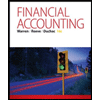
Financial Accounting
Accounting
ISBN:
9781305088436
Author:
Carl Warren, Jim Reeve, Jonathan Duchac
Publisher:
Cengage Learning
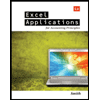
Excel Applications for Accounting Principles
Accounting
ISBN:
9781111581565
Author:
Gaylord N. Smith
Publisher:
Cengage Learning
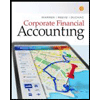
Corporate Financial Accounting
Accounting
ISBN:
9781305653535
Author:
Carl Warren, James M. Reeve, Jonathan Duchac
Publisher:
Cengage Learning

Financial Accounting
Accounting
ISBN:
9781305088436
Author:
Carl Warren, Jim Reeve, Jonathan Duchac
Publisher:
Cengage Learning

Excel Applications for Accounting Principles
Accounting
ISBN:
9781111581565
Author:
Gaylord N. Smith
Publisher:
Cengage Learning

Corporate Financial Accounting
Accounting
ISBN:
9781305653535
Author:
Carl Warren, James M. Reeve, Jonathan Duchac
Publisher:
Cengage Learning

Financial And Managerial Accounting
Accounting
ISBN:
9781337902663
Author:
WARREN, Carl S.
Publisher:
Cengage Learning,
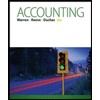
Accounting (Text Only)
Accounting
ISBN:
9781285743615
Author:
Carl Warren, James M. Reeve, Jonathan Duchac
Publisher:
Cengage Learning
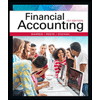
Financial Accounting
Accounting
ISBN:
9781337272124
Author:
Carl Warren, James M. Reeve, Jonathan Duchac
Publisher:
Cengage Learning